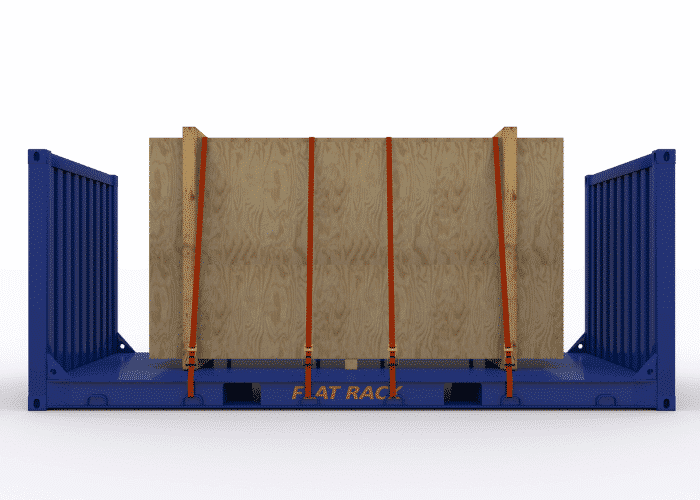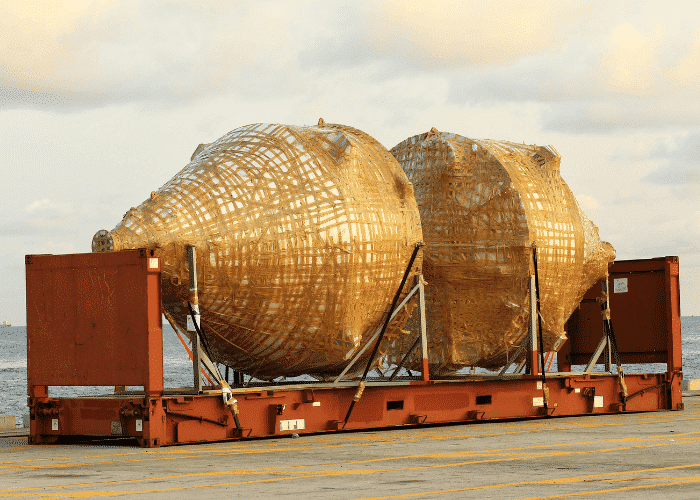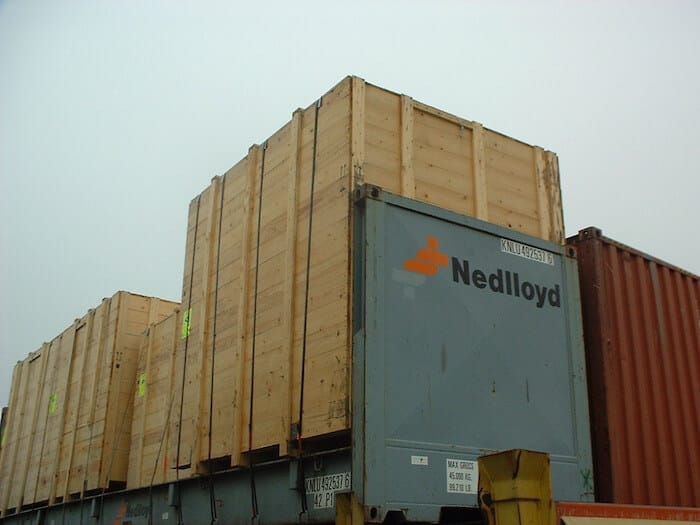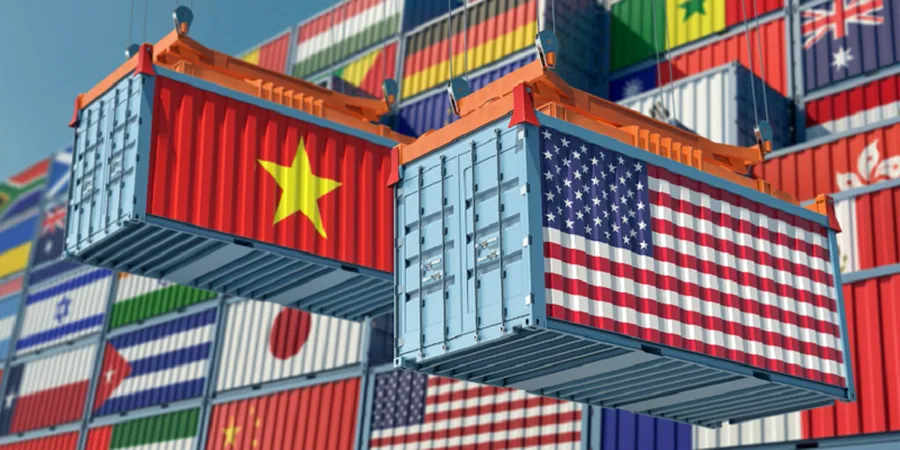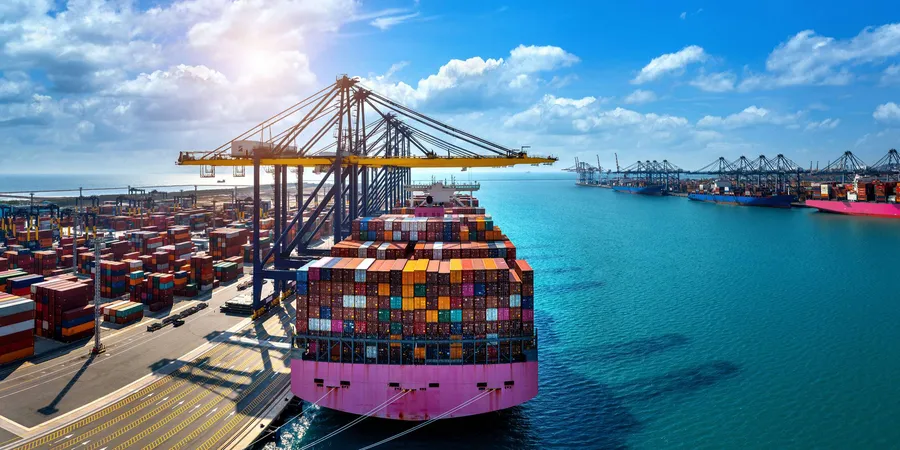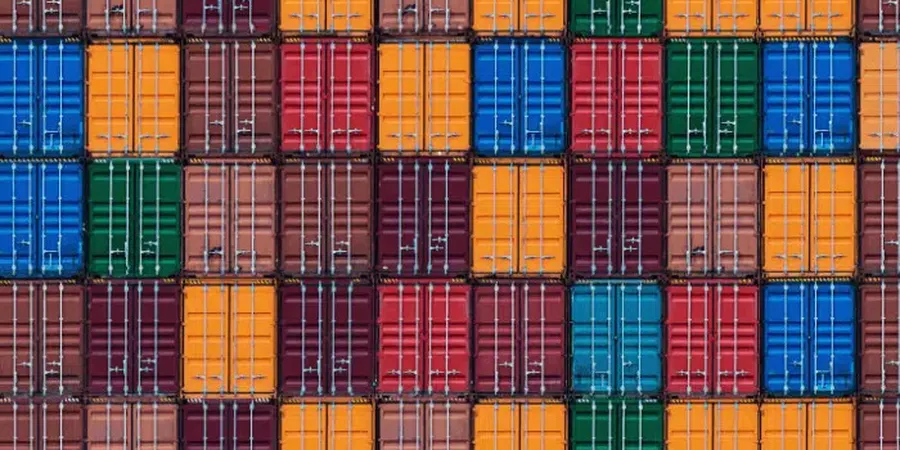Flat Rack Containers – Types, Specifications And Dimensions
Container vessels are a very unique method of transportation by sea and are gradually taking over the market for general purpose and cargo-carrying ships.
As they are compact and easy to store, these containers are integral for efficient transportation across the world.
Containers are built to store different types of cargo that can be shipped.
Freight companies buy or lease these units, store any type of good they wish, and can then have it transported around the globe.
Moreover, shipping containers can also be used for road and rail transport due to their unique design and structure.
These containers are called standard intermodal, meaning that they can very easily be shifted between trailers (for road or rail) and container vessels.
What makes them handy for different transportation scenarios is that they can be multiple units can be stored in a small place. Due to the way that these containers are manufactured, several units can be vertically stacked on each other.
Container ships store and transport hundreds of containers on board. No other vessel is capable of transporting such a large variety of goods on a single voyage.
The annual rate of market growth of the container industry is set on a steady incline owing to these reasons.
In the container industry, different goods are shipped on a daily basis. There are various types of containers that are used for commercial shipping.
From refrigerated units known as reefers to open-top units for large industrial parts, there are different containers for almost every type of cargo that is shipped.
Note that conventional containers are built-in fixed dimensions based on industry standards.
Generally, the breadth and height are the same across most units, while the length is either 20 foot or 40 foot.
These lengths are the international standards for container sizes and are known as- Twenty-Foot Equivalent (TEU) and Forty Foot Equivalent (FEU).
Consider what happens when the cargo to be shipped is oddly shaped or too large for the container. Or perhaps it may not be feasible to load it through the doors at either end or through the roof (as in open-top containers).
For such types of cargo, conventional carriers and ships may not be an option. In such situations, the Flat Rack Container is used for transportation.
In this article, we will take a look at Flat Rack Container, common cargo types, and other specifications of these units.
Introduction to Flat Rack Containers
A flat rack container is just like any other container, except that it is missing 2 side walls (generally the longer faces) and does not have a roof. It has a solid base and 2 walls that give it the appearance of a rack, which gives the container its rather unique name.
This container is ideal for large, bulky, and unwieldy cargo that cannot be fit within the space constraints of a conventional container. They are built from strengthened steel to keep the structure rigid and strong. In some cases, the container can be covered on all sides by a tarpaulin.
For this, the goods have to fit completely within the edges of the container sides. Otherwise, the container may be left open, with the cargo separately wrapped and packaged.
Heavy-duty tarpaulin covers are used to prevent mid journey tampering. Pad eyes, lashing rings, and clamp locks are used to secure the cover on to the container structure.
To load cargo on to the container, there are different methods adopted depending on the cargo shape and weight.
Very heavy cargo is loaded from the top and then secured in place. This is because only a crane can take and support the complete weight of such goods.
For lighter and more manageable goods, it can be lifted by a forklift and then shifted horizontally.
This operation must be undertaken with utmost care so that no accidental grazing contact is made with the walls of the container.
Types of Flat Rack Containers
There are two main types of flat rack containers based on their design and support:
1. Collapsible flat rack;
2. Non-collapsible flat rack;
The collapsible flat rack has walls at either end that can be flattened down when not in use. For this, they can either be detached or folded down on to the base of the container.
These units are very easy to store since they have no vertical height. An interesting fact is that when stacked in the collapsed manner, nearly 4 flat racks occupy the space of a single standard container!
The ease of detaching or folding the walls can vary but is usually a simple process. However, the main problem with this container is strength.
As discussed in the last section of this article, the primary strength of any container lies in its walls that are able to conduct loads and stresses away from the roof.
They evenly disperse forces without allowing any point loads to form. However, a collapsible wall does not serve this function and weakens the structure. So, care must be taken when using collapsible flat racks.
Non-collapsible flat racks have solid walls that cannot be removed. They are much stronger and structurally stiffer than collapsible variants.
Thus, they are easier to ship since loads can be borne by the walls and transmitted to the floor and containers below it (when stacked).
However, stowing away when not in use can be an issue since it takes up quite a bit of space. This is the only disadvantage when it comes to using the non-collapsible variant of flat rack containers.
Flat Rack Container Specifications and Dimensions
The flat rack generally has the same external dimensions as any other conventional container. This is because it has walls and internal sides that provide the outer support structure. However, there are no doors or other openings that can be measured.
The volume and capacity mentioned in the below table are based on an imaginary volume bound between the internal dimensions of the container.
However, as mentioned above, the goods stored can extend both along the transverse (extending out of the breadth) and upwards (extending out of the roof) and can have a volume much larger than what is mentioned here.
The important dimensions of a 20’ and 40’ flat rack container are as follows:
| 20’ Flat Rack Container | 40’ Flat Rack Container | |
| INTERNAL LENGTH | 5.89 m | 12.03 m |
| INTERNAL WIDTH | 2.35 m | 2.35 m |
| INTERNAL HEIGHT | 2.38 m | 2.38 m |
| EXTERNAL LENGTH | 6.06 m | 12.19 m |
| EXTERNAL WIDTH | 2.44 m | 2.44 m |
| EXTERNAL HEIGHT | 2.59 m | 2.59 m |
| UNLADEN WEIGHT (TARE) | 2,360 kg | 5,000 kg |
| PAYLOAD CAPACITY | 30,140 kg | 40,000 kg |
| VOLUME CAPACITY | 32.7 m3 | 62.2 m3 |
It is important to note that the dimensions of a unit can vary between different container companies based on the region. Individual shipping companies also may build these units with marginally different dimensions.
However, considering that they must be compatible with other modes of transportation such as road and rail (intermodal transport as we had discussed earlier), a strict lower and upper limit is imposed on the variations in these sizes.
Common Cargo and Goods Shipped in Flat Rack Containers
The common types of cargo shipped through flat rack containers include machinery, factory parts, heavy industry components, equipment etc.
They are ideally transported by flat racks because of the additional space available. However, due to the shape, care must be taken when securing to the base and walls.
The jet or turboprop engines of planes are one of the most common types of goods shipped via flat rack containers. This is because they generally fit within the length of the container, but must be installed through the top by a crane because of weight restrictions. Their diameter exceeds the width of most containers, so flat racks are the ideal choice.
Another very common cargo is commercial automobiles and construction vehicles. They are lashed on to the container floor and are covered with tarpaulin.
Due to the weight-bearing capacity and size of flat racks, they are suitable for even heavy-duty trucks.
Lastly, pipes are transported via flat rack units. In general, pipes are ideally stored and transported in containers that are open on at least one face. So, they are shipped by flat rack, open-top, double door, and side door containers.
Because of the open space, flat racks are suited for shipping industrial pipes that are very large and cannot fit within conventional container units.
Whatever the cargo type may be, it is essential that it is loaded properly without exerting any pressure on to the goods itself. The container is built to carry away loading, while the cargo may be fragile.
For this reason, it is better to store flat racks either at the top of a container stack (4 to 5 units high by convention) or on the ground. This prevents accidental damage due to contact with other containers and cargo.
How to Choose the Right Flat Rack Container
Flat Rack Containers are important when shipping large and bulky objects since they provide continuous storage space. However, the advantages of additional storage come at the price of structural integrity.
The way that conventional containers are built, the loads and forces borne on it can be evenly distributed to other containers through a system of vertical supports installed into the side walls.
So, even when stacking these containers, the vertical supports and reinforced roof and bottom ensures that the load can be held without the container bending or cracking.
This strength is largely due to the support members and the reinforced stiffeners running along with the container faces. However, the flat rack container only has 3 faces- the horizontal bottom and 2 smaller vertical end face.
Although there are still supports running along with the 4 corners, there are no additional structures to support any load.
The sidewalls and roof are generally tarpaulin-covered, and this provides little to no strength. The strength further reduces if the side walls are collapsible.
Another major problem that arises with these units is bending.
With conventional units, material stresses in the container are dissipated in all directions by side faces, which keeps the structure rigid and stiff.
However, without these faces, the flat rack containers are not able to dissipate these stresses, and point load build-up can occur.
When this happens, either ultimate and sudden failure takes place, or a gradual bending moment is applied on the container bottom.
To understand what really happens, visualize a flat rectangular plate suspended from the 2 ends lengthwise. As weights are kept on it, 2 things can happen. If the plate is very stiff and brittle, it will bear loads until it suddenly snaps in 2.
On the other hand, if the plate is not adequately stiffened, it may start to bend with the loads until it eventually fails and gives way. Either way, this outcome is not suitable for containers and care must be taken.
So how can you prevent container failure from taking place?
The solution lies in analyzing the cargo type, weight, and probability of shifting, and then ensuring that these parameters lie well within the permissible limits for your flat rack container.
For instance, when designing such units, manufacturers and shipping companies often run extensive simulations to ensure that even during rough sea voyages or suspension by a crane, the unit remains stiff, does not bend, and retains its strength.
Additional simulations on spreader crane carriage must also be conducted to ensure that the unit can actually be loaded on to a ship without bending.
Consider discussing with your logistics consultant to determine the best flat rack container and any additional measures that may need to be taken to keep your cargo safe.
Reference: Marine Insight


